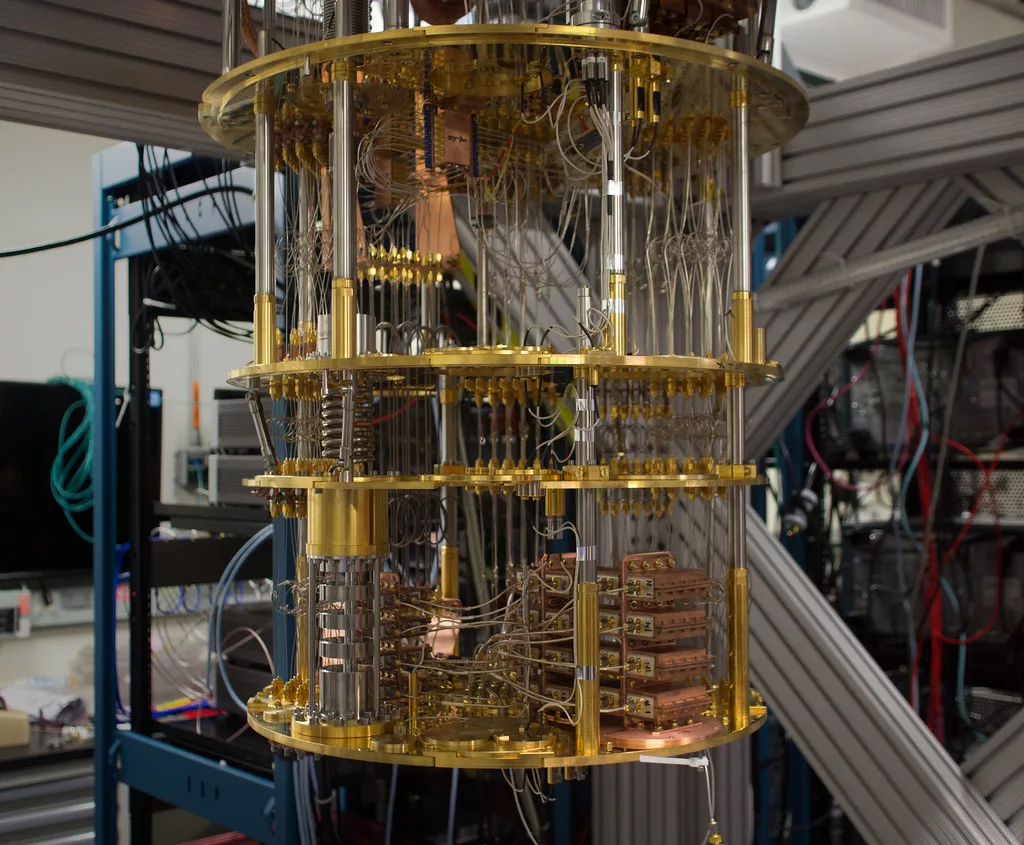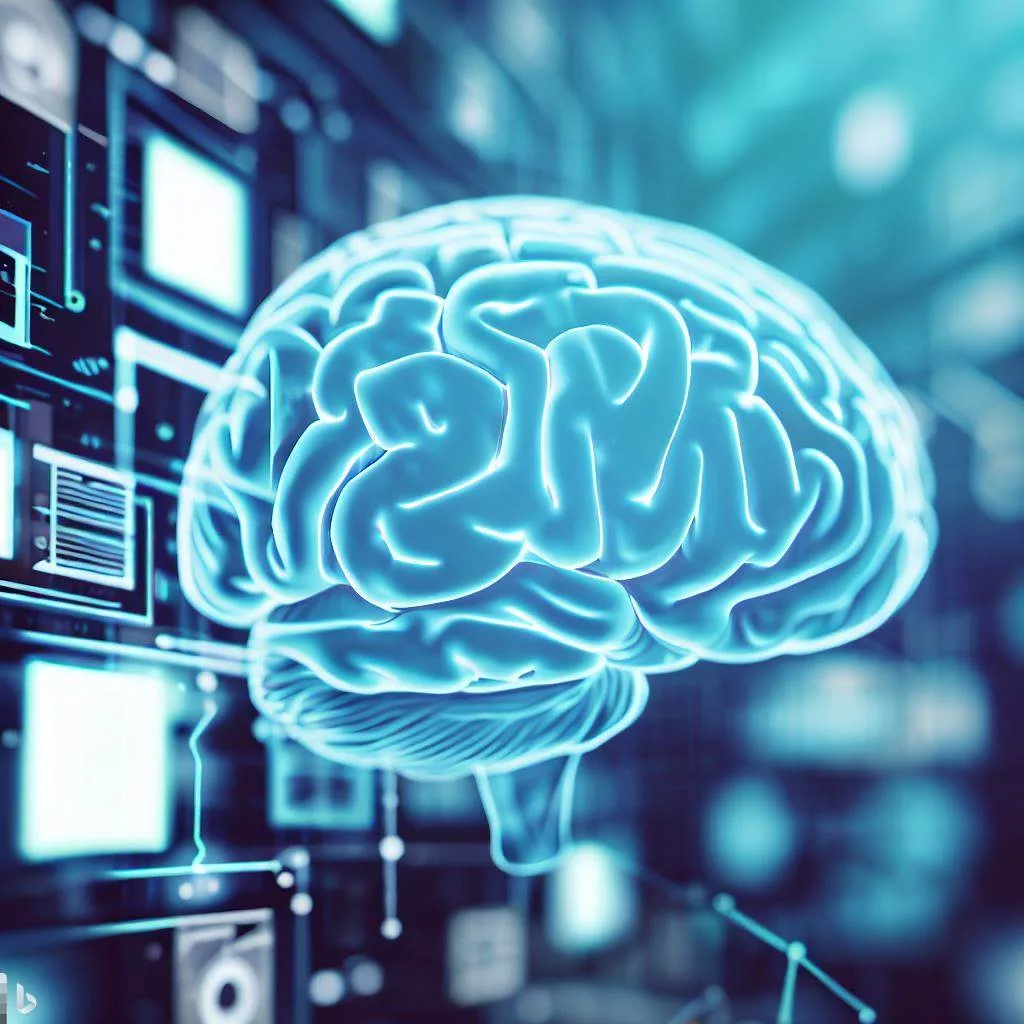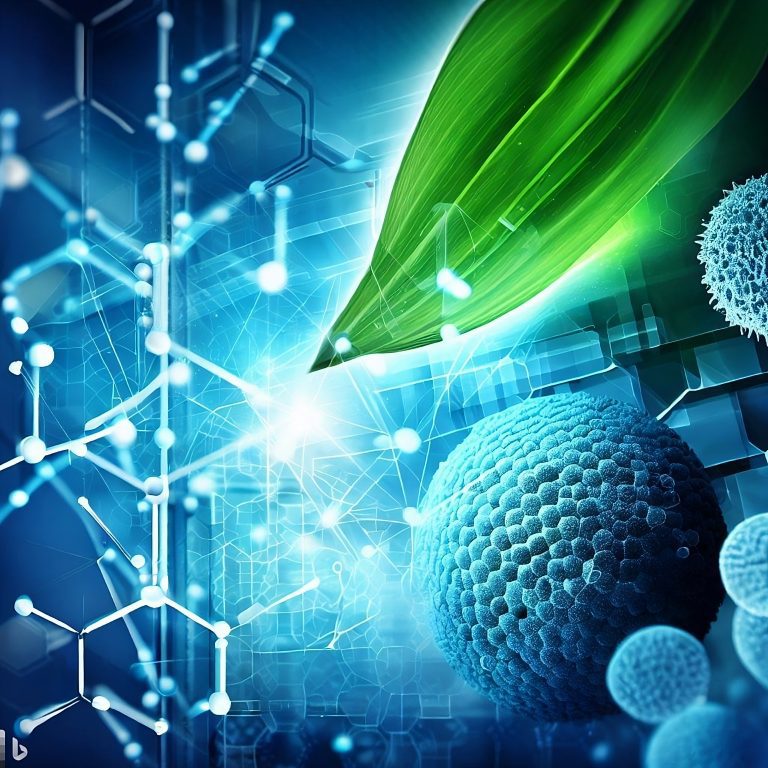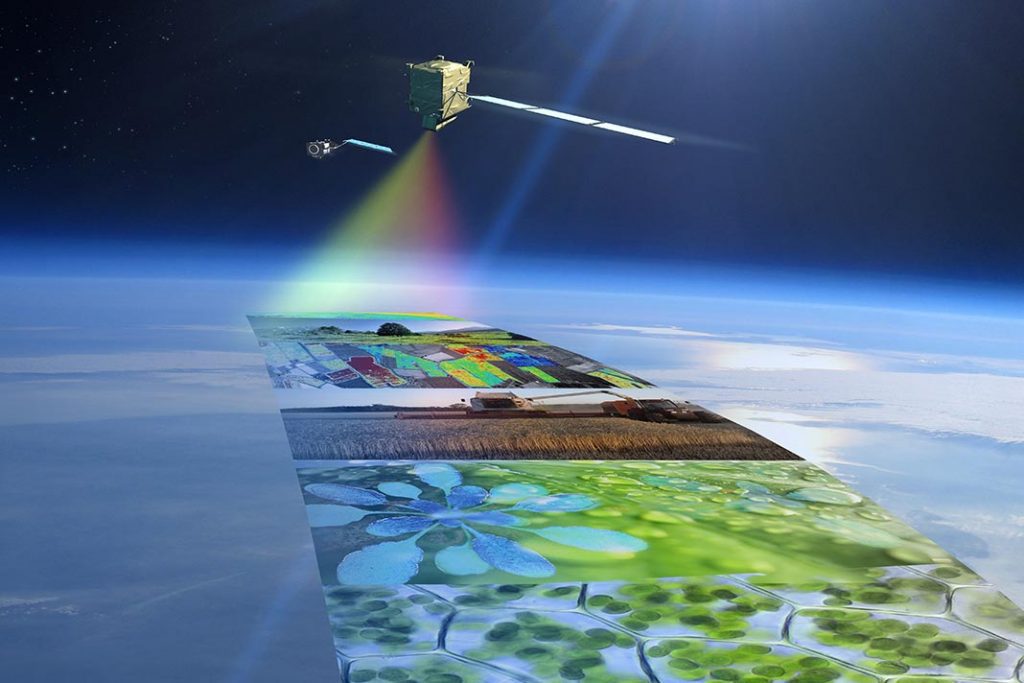Introduction
In today’s rapidly evolving world, cutting-edge technologies are playing a crucial role in transforming the field of science and pushing the boundaries of human knowledge. This article delves into 10 groundbreaking technologies transforming science:
- homomorphic encryption
- 3D multi-sensor transmitters
- robotics
- IoT, 5G and Edge Computing
- at-home digital diagnostics
- quantum computing
- nanotechnology
- neural interfaces
- 3D printing and additive manufacturing
- cognitive computing
Homomorphic Encryption
Homomorphic encryption is a cutting-edge technology that is transforming the field of science by enabling secure computation on encrypted data. With homomorphic encryption, data can be encrypted in such a way that it can be processed without being decrypted first, which is a major breakthrough in the field of cryptography. This technology has the potential to revolutionize the way data is stored and processed, especially in fields such as healthcare, finance, and government, where data privacy and security are of utmost importance.
One of the key applications of homomorphic encryption is in the field of genomics, where it is being used to protect the privacy of genetic data. With homomorphic encryption, researchers can perform computations on encrypted genetic data without ever seeing the data itself, which is a major breakthrough in the field of genomics. This technology has the potential to accelerate research in the field of genetics and lead to new discoveries that could transform the way we treat diseases.
3D Multi-Sensor Transmitters
3D multi-sensor transmitters are being used in science applications in a variety of ways. Here are some examples:
- Body motion capture: 3D multi-sensor transmitters, which typically use accelerometers and gyroscopes to measure motion, are being used in body motion capture systems. These systems are used in a variety of applications, including sports training, physical therapy, and animation.
- Wearable technologies: 3D multi-sensor transmitters are also being used in wearable technology for consumer sport applications. These sensors can be combined with magnetometers to form an inertial measuring unit (IMU), which can be used to measure acceleration, velocity, and distance. This technology is being used in a variety of sports applications, including running, cycling, and swimming.
- Context recognition: 3D multi-sensor transmitters are being used in context recognition systems, which use motion information to recognize different activities. These systems typically use accelerometers, gyroscopes, and magnetometers to measure motion, and can be used in a variety of applications, including healthcare and security.
- Level sensors: 3D multi-sensor transmitters are also being used as level sensors in precision measurement applications. These sensors use guided wave radar technology to measure the level of liquid in a container, and can be used in a variety of industries, including life sciences and food and beverage.
- Indoor positioning: 3D multi-sensor transmitters are being used in smartphones for indoor positioning. These sensors can be used to measure distance and motion, and can be combined with other sensors, such as GPS and Wi-Fi, to provide accurate indoor positioning.
- Physical parameter measurement: 3D multi-sensor transmitters are being used in a variety of smartphone apps to measure physical parameters such as temperature, pressure, and motion. These apps are being used in a variety of applications, including weather forecasting, earthquake monitoring, and fitness tracking.
Robotics
Robotics is transforming the field of science by enabling machines to perform tasks that are hazardous to humans, such as defusing bombs, finding survivors in unstable ruins, and exploring mines and shipwrecks. Here are some examples of how robotics is being used in science:
- Research and Exploration: Robots are used in scientific research and exploration to gather data and perform experiments in environments that are difficult or dangerous for humans to access. For example, robots have been deployed in deep-sea exploration, space exploration, and polar expeditions to collect samples, monitor conditions, and conduct research.
- Laboratory Automation: Robotics is used in laboratories to automate repetitive tasks, such as sample handling, pipetting, and data analysis. This improves efficiency, accuracy, and reproducibility in scientific experiments.
- Healthcare: Robotics is being used in healthcare to assist in surgical procedures. Robots can be used to perform minimally invasive surgeries, which can reduce the risk of complications and improve patient outcomes.
- Education: Robotics is also used in STEM (science, technology, engineering, and mathematics) as a teaching aid. Robotics can be used to teach students about programming, engineering, and physics.
- Environmental monitoring: Robotics is being used in environmental monitoring to collect data on air and water quality, weather patterns, and wildlife populations. Robots can be used to collect data in remote or hazardous environments, which can help scientists better understand the natural world.
IoT, 5G And Edge Computing
IoT, 5G, and Edge Computing are cutting-edge technologies that are transforming the field of science in various ways. Here are some examples of how these technologies are being used to advance science:
- Smart cities: IoT devices can be used to collect real-time data on traffic patterns, air quality, and energy usage in smart cities. 5G and Edge Computing can be used to optimize the network and reduce interference, which can improve the accuracy of the data collected.
- Environmental monitoring: IoT devices are being used to collect data on air and water quality, weather patterns, and wildlife populations. Edge Computing can be used to process this data in real-time, which can help scientists better understand the natural world.
Read more: IoT for Water Quality Monitoring
- Precision agriculture: IoT devices are being used in precision agriculture to collect data on soil moisture, temperature, and nutrient level. This data can be used to optimize crop yields and reduce waste.
- Healthcare: IoT devices are being used in healthcare to monitor patients remotely and collect data on vital signs. Edge Computing can be used to process this data in real-time, which can help doctors make more informed decisions about patient care.
- Manufacturing: IoT devices are being used in manufacturing to collect data on machine performance and optimize production. 5G and Edge Computing can be used to improve the speed and reliability of this data collection.
At-Home Digital Diagnostics
At-home digital diagnostics is a type of digital health technology that is advancing science by enabling patients to monitor their health from the comfort of their own homes. In scientific research, test subjects can use devices such as blood glucose monitors, blood pressure monitors, and pulse oximeters to track their health and share the data with their healthcare providers. This data can be used to develop new treatments and improve our understanding of disease.
Quantum Computing

Quantum computing is a rapidly-emerging technology that is transforming the field of science in various ways. Here are some examples of how quantum computing is currently advancing science:
- Drug discovery: Quantum computing is being used to simulate the behavior of molecules and accelerate the discovery of new drugs. This technology can help researchers identify potential drug candidates more quickly and accurately than traditional methods.
- Energy storage: Quantum computing is being used to develop new materials for energy storage, such as batteries and fuel cells. This technology can help researchers design materials that are more efficient and longer-lasting than current materials.
- Artificial intelligence: Quantum computing is being used to develop new algorithms for artificial intelligence and machine learning. This technology can help researchers train machine learning models more quickly and accurately than traditional methods.
Nanotechnology
Nanotechnology is a rapidly-evolving field of science that is advancing in various ways. Here are some examples of how nanotechnology is currently transforming the field of science:
- Energy production: Nanotechnology is being used to improve the efficiency of fuel production from raw petroleum materials through better catalysis. It is also enabling reduced fuel consumption in vehicles and power plants through higher-efficiency combustion and decreased friction.
- Sustainable development: Nanotechnology has important roles to play in international efforts in sustainability. It is being used to develop new materials and devices with a vast range of applications, such as in nanomedicine, nanoelectronics, biomaterials, energy production, and consumer products.
- Biomedicine: Nanotechnology is being used in biomedicine for diagnosis, drug delivery, and molecular imaging. It is being used to develop new treatments for cancer, diabetes, and other diseases.
- Electronics: Nanotechnology is being used to improve the design of electronic products such as light bulbs, computer screens, and fuels. It is being used to develop faster and more portable systems that can manage and store larger amounts of data.
- Environmental science: Nanotechnology is being used in environmental science to develop new materials and devices for water purification, air filtration, and waste treatment. It is being used to develop new materials that can remove pollutants from the environment and improve the efficiency of industrial processes.
Neural Interfaces

Neural interfaces, also known as brain-computer interfaces (BCIs), are devices that enable direct communication between the human brain and electronic systems. They have the potential to revolutionize various fields of science, including neuroscience, medicine, psychology, and computer science. Some of the ways neural interfaces are being used to advance science include:
- Understanding the brain: Neural interfaces allow researchers to record and analyze brain activity in real-time, providing valuable insights into the functioning of different brain regions and neural networks. This helps advance our understanding of the brain’s complex processes, such as cognition, emotion, and decision-making.
- Treating neurological disorders: BCIs have shown promise in treating a wide range of neurological disorders, such as epilepsy, Parkinson’s disease, and stroke. By recording and analyzing brain signals, neural interfaces can help identify abnormal patterns and deliver targeted electrical stimulation to alleviate symptoms or restore lost functions.
- Assistive technologies for people with disabilities: Neural interfaces have been used to develop advanced prosthetic limbs that can be controlled by the user’s thoughts, providing greater independence and improved quality of life for individuals with limb loss or paralysis. BCIs are also being explored for their potential to help people with speech or communication impairments, enabling them to communicate through thought alone.
- Rehabilitation: Neural interfaces have been used in rehabilitation programs for patients with brain injuries or neurological conditions. By providing real-time feedback on brain activity, BCIs can help patients learn to modify their brain patterns and regain control of their movements or cognitive abilities.
- Enhancing human capabilities: Some researchers are exploring the potential of neural interfaces to augment human cognition, memory, and learning abilities. By directly interfacing with the brain, it may be possible to enhance our natural capabilities or even acquire new skills more quickly.
- Brain-to-brain communication: Neural interfaces have been used to achieve direct communication between two brains, in a process known as brain-to-brain interfacing (BBI). This has potential applications in collaborative problem-solving, telepathy-like communication, and even shared virtual reality experiences.
- Human-computer interaction: Neural interfaces are being developed to enable more efficient and intuitive interactions between humans and computers. By translating brain signals directly into computer commands, BCIs can help users control devices, navigate virtual environments, or even compose music using only their thoughts.
- Artificial intelligence (AI) and machine learning: Neural interfaces can provide valuable data for training AI models, helping to improve their accuracy and effectiveness. Additionally, BCIs can be used to develop more advanced AI systems that can learn directly from human brain activity, potentially leading to more intuitive and human-like AI systems.
3D Printing and Additive Manufacturing
3D printing and additive manufacturing are transforming various fields of science, research, and industry by enabling the rapid and precise fabrication of complex objects. Here are some ways in which 3D printing and additive manufacturing are being used to advance science:
- Rapid prototyping: 3D printing allows researchers and engineers to quickly create and test physical prototypes, accelerating the development of new products, devices, and scientific instruments. This rapid prototyping capability enables scientists to iterate quickly and refine their designs, ultimately leading to more efficient research and innovation.
- Bioprinting and tissue engineering: 3D printing is being used to create biological structures, such as tissues and organs, using living cells as the “ink.” This process, known as bioprinting, has the potential to revolutionize regenerative medicine, drug testing, and organ transplantation. By creating patient-specific tissues and organs, bioprinting can help reduce organ transplant waiting times and improve the success of transplants by minimizing the risk of rejection.
- Customized prosthetics and medical implants: 3D printing enables the creation of customized prosthetics and medical implants tailored to an individual patient’s unique anatomy. This not only improves the fit and comfort of these devices but can also enhance their functionality and effectiveness. Additionally, 3D printing has been used to create patient-specific surgical guides and tools, helping to improve the precision and outcomes of surgical procedures.
- Materials science research: 3D printing allows for the creation of objects with complex internal structures, which can be used to study and develop new materials with unique properties. Researchers can design and fabricate materials with specific mechanical, thermal, or electrical properties, advancing our understanding of materials science and enabling the development of new materials for various applications.
- Aerospace and automotive engineering: 3D printing is being used to create lightweight, high-strength components for aerospace and automotive applications. By reducing the weight of vehicles and aircraft, additive manufacturing can help improve fuel efficiency, reduce emissions, and lower production costs.
- Education and scientific communication: 3D printing is an invaluable tool for teaching and communicating scientific concepts. By creating physical models of abstract concepts or complex structures, researchers and educators can help students and the general public better understand the underlying principles and appreciate the intricacies of various scientific phenomena.
- Micro- and nanoscale fabrication: Advances in 3D printing technology have enabled the fabrication of structures at the micro- and nanoscale. This capability has opened up new possibilities for research in fields such as nanotechnology, microfluidics, and electronics.
- Preservation of cultural heritage: 3D printing can be used to create accurate replicas of historical artifacts, helping to preserve and study cultural heritage. This technology can also aid in the restoration of damaged artifacts by providing precise, custom-made replacement parts.
Cognitive Computing
Cognitive computing is a field of computer science that combines cognitive science and computer science to simulate human thought processes. Here are some examples of how cognitive computing is currently advancing science:
- Healthcare: Cognitive computing is being used in healthcare to improve patient outcomes and personalize treatment plans. It is being used to analyze large amounts of patient data and identify patterns that can help doctors make more informed decisions about patient care.
- Energy production: Cognitive computing is being used to optimize energy production and reduce waste. It is being used to analyze data from sensors and other sources to identify areas where energy efficiency can be improved.
- Financial modeling: Cognitive computing is being used in finance to develop new algorithms for risk analysis and fraud detection. It is being used to analyze large amounts of financial data and identify patterns that can help financial institutions make more informed decisions.
- Education: Cognitive computing is being used in education to personalize learning and improve student outcomes. It is being used to analyze student data and identify areas where students need additional support.
- Environmental science: Cognitive computing is being used in environmental science to analyze data on air and water quality, weather patterns, and wildlife populations. It is being used to identify patterns and trends that can help scientists better understand the natural world.
Conclusion
The field of science is constantly evolving, and new technologies are emerging that have the potential to transform the way we think about the world. The top 10 cutting-edge technologies currently transforming the field of science include homomorphic encryption, 3D multi-sensor transmitters, robotics, IoT, 5G and Edge Computing, at-home digital diagnostics, quantum computing, nanotechnology, neural interfaces, 3D printing and additive manufacturing, and cognitive computing. These technologies are being used in a wide variety of applications, from healthcare to finance to environmental science, and are helping researchers solve problems that were once thought to be impossible. As these technologies continue to evolve, they are likely to converge with other fields and industries, creating new opportunities for innovation and discovery.
Next Steps
Round Table Environmental Informatics (RTEI) is a consulting firm that helps our clients to leverage digital technologies for environmental analytics. We offer free consultations to discuss how we at RTEI can help you.


